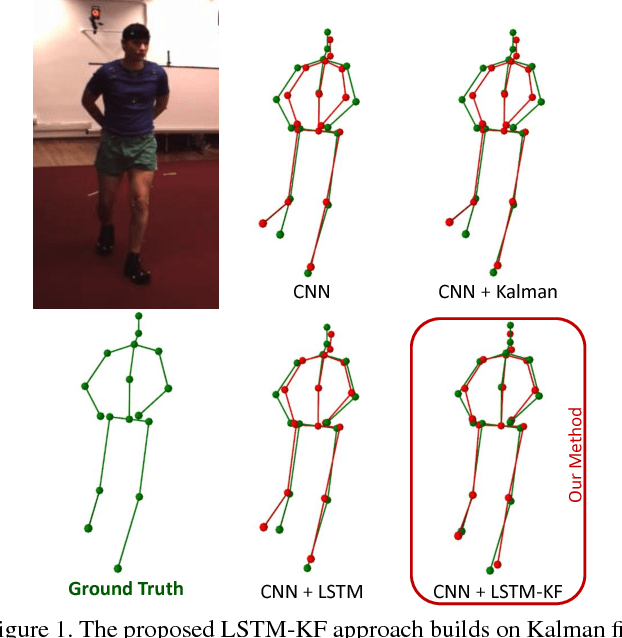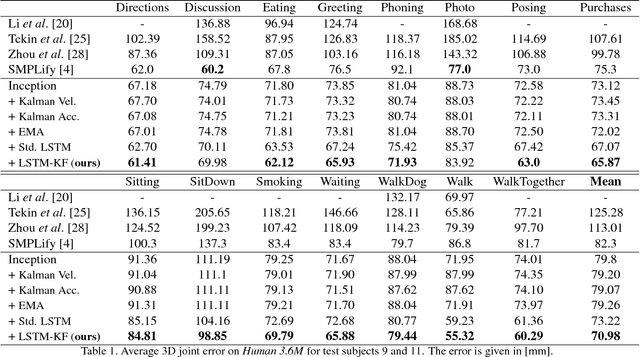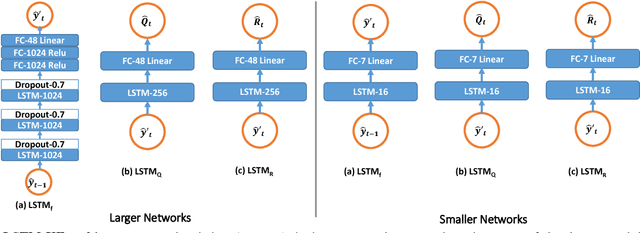Long Short-Term Memory Kalman Filters:Recurrent Neural Estimators for Pose Regularization
Paper and Code
Aug 06, 2017



One-shot pose estimation for tasks such as body joint localization, camera pose estimation, and object tracking are generally noisy, and temporal filters have been extensively used for regularization. One of the most widely-used methods is the Kalman filter, which is both extremely simple and general. However, Kalman filters require a motion model and measurement model to be specified a priori, which burdens the modeler and simultaneously demands that we use explicit models that are often only crude approximations of reality. For example, in the pose-estimation tasks mentioned above, it is common to use motion models that assume constant velocity or constant acceleration, and we believe that these simplified representations are severely inhibitive. In this work, we propose to instead learn rich, dynamic representations of the motion and noise models. In particular, we propose learning these models from data using long short term memory, which allows representations that depend on all previous observations and all previous states. We evaluate our method using three of the most popular pose estimation tasks in computer vision, and in all cases we obtain state-of-the-art performance.
 Add to Chrome
Add to Chrome Add to Firefox
Add to Firefox Add to Edge
Add to Edge